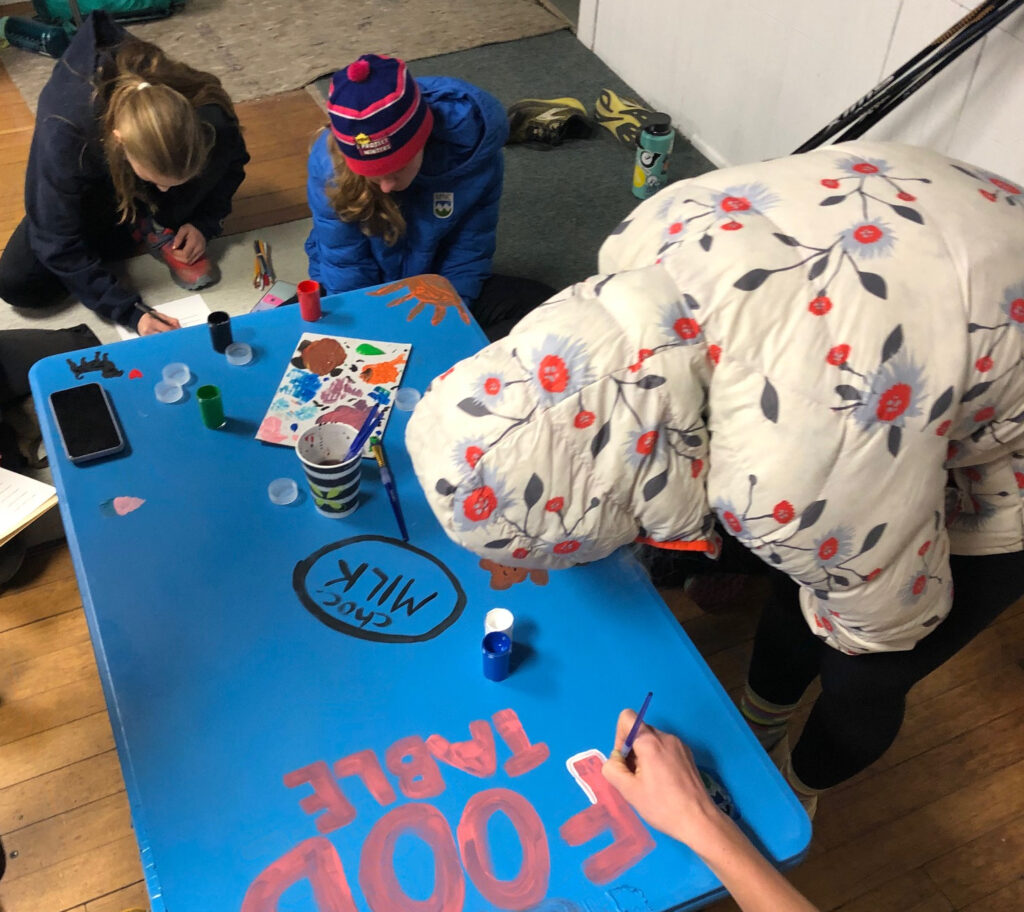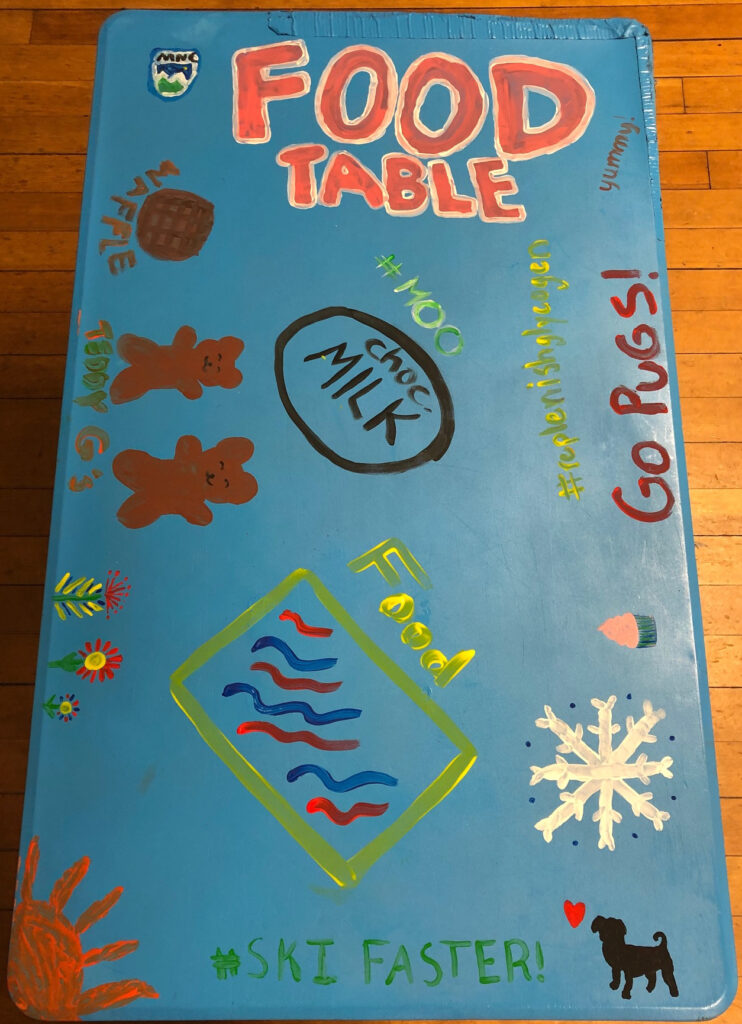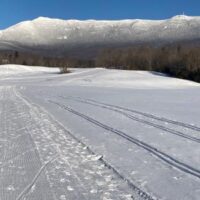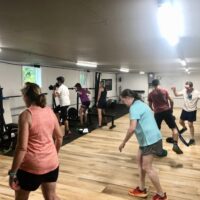4pm is a tough time to exercise. A little reading into training literature will go so far as to recommend 3-4pm as the least ideal window for exercise within the realm of a normal day. This is especially true for teenage athletes in high school.
Take the great book “Roar” for example, which states:
“Most everyone has a lull around 3:00pm.; it has to do with our circadian rhythm, which causes a dip in core temperature.”
Lunch is far enough in the past that the fuel you got in the cafeteria is no longer sufficient for training…and dinner is quickly approaching, sending signals that the body needs more food, and fast.
But there’s psychology at play too, which goes beyond the body’s needs from a fueling sense. Mentally and emotionally, by 4pm athletes have dealt with the busy schedules and anxiety of a long school day (plus travel to the training site), and having to switch to “go time” for ski practice is not always easy. What’s an ideal way to set training off on the right foot? Get some fuel in the tank!
Again, from Roar:
“You want that preworkout snack to accomplish three goals. One, provide fuel so you can go into your workout fully energized. Two, help minimize the muscle breakdown that occurs during your workout while maximizing the training adaptation (getting fitter and stronger) you want. Three, make you feel good mentally and physically.”
Armed with some scientific information on the best pre-workout snacks, what kind of snacks teenagers are likely to pick up and eat, and the cost of certain snacks, the food table was born earlier in the fall.
What is the food table? It’s not complicated…in fact, it’s just what it sounds like! A folding table placed prominently trailside, near a common gathering point. Sometimes when it is most important to consume different types of fuel over the course of a workout, such as carbs and a little protein before/sugars during/carbs and more protein after, the table will be divided into “BEFORE/DURING/AFTER” sections. But mostly it’s just a table of snacks, and people stopping to eat at any point in the workout is better than never stopping at all, or having the “perfect ratio” of nutrients.
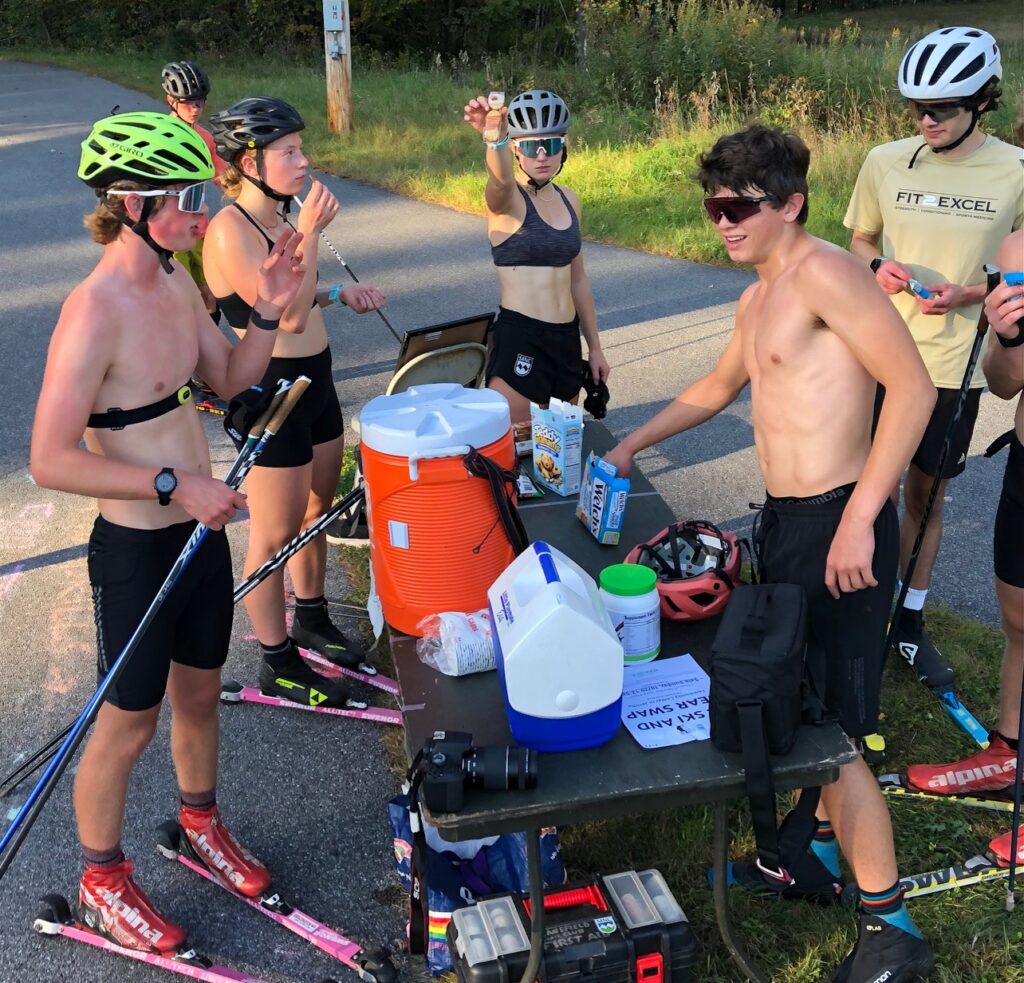
Food table early in the fall
It probably took me too long to realize this, but to play around with an old adage, “sometimes you just have to provide someone the fish, rather than teaching them how to fish.”
I’ve tried the route of sending emails and posting recommendations to athletes and parents extolling the virtues of having a snack in your bag for the ride to practice, and a snack for the ride home as well (teaching how to fish). But life is busy and those seem to be easily-overlooked concepts.
As an alternative, when you put a box of Teddy Grahams, some Nutella and pretzels, and a box of fruit snacks on a table next to the trail (giving a fish), it’s amazing how many skiers will fuel up before, during, and after the session. When there’s a cooler with a bottle of chocolate milk ready for after the workout, nobody walks away without having some recovery nutrition in their system.
While this takes some ownership off the athlete, in my mind the trade-off is worth the extra effort and cost to provide snacking options. Food is fuel, and we all need it to survive and thrive. Having a table of snacks omnipresent at training sends a positive message: we SHOULD be eating before practice, during practice, and after practice. And this fuel doesn’t have to always be expensive, trendy, or perfectly balanced in nutrients…if you need fuel, something is better than nothing. Whether you bring fuel for training or not, something will be available to you. No workout needs to be done on an empty stomach.
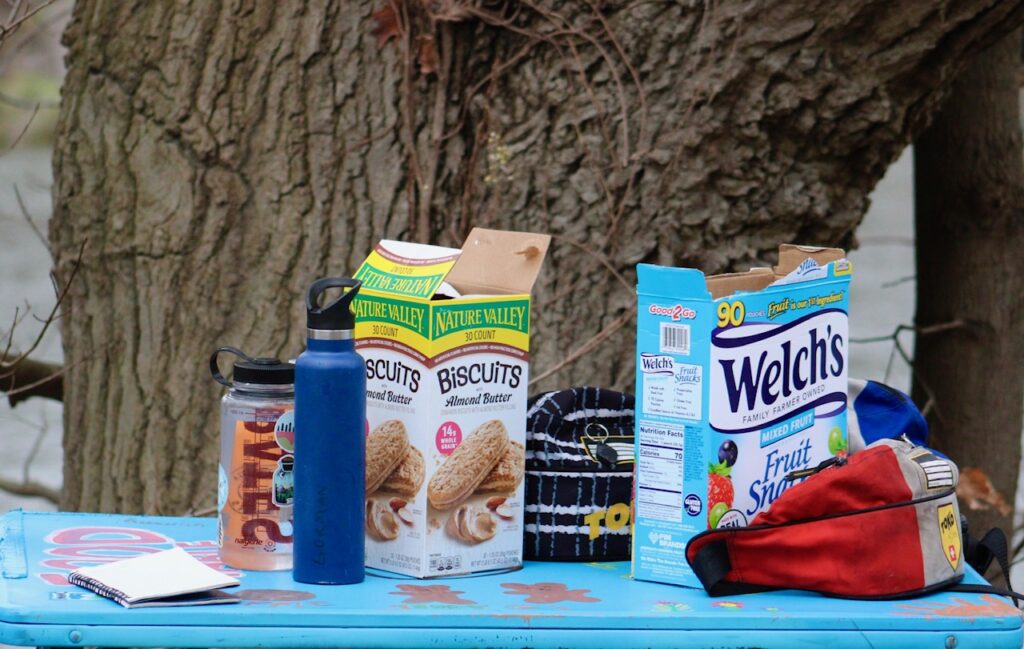
But there’s more. The food table had an unintended benefit that started to become apparent after a few weeks of its presence. In short, the food table became the “water cooler” of the ski training office. It became a gathering point, a socializing area, and a catalyst for putting people in closer proximity to one another. For a team coming together from different schools, towns, and backgrounds, that ends up being extremely powerful.
When you are at the food table you are stopped: there’s no difference in skier speed or ability. Food brings people together, whether it’s a group of hunters trying to nab a buffalo to provide sustenance for a year, or a group of skiers passing around gummy bears between a set of intervals.
So when we had some team space at the Community Center last week, I got some paint and set out the food table: it was time to make it our own. Where will it go next? Wherever we are training!
